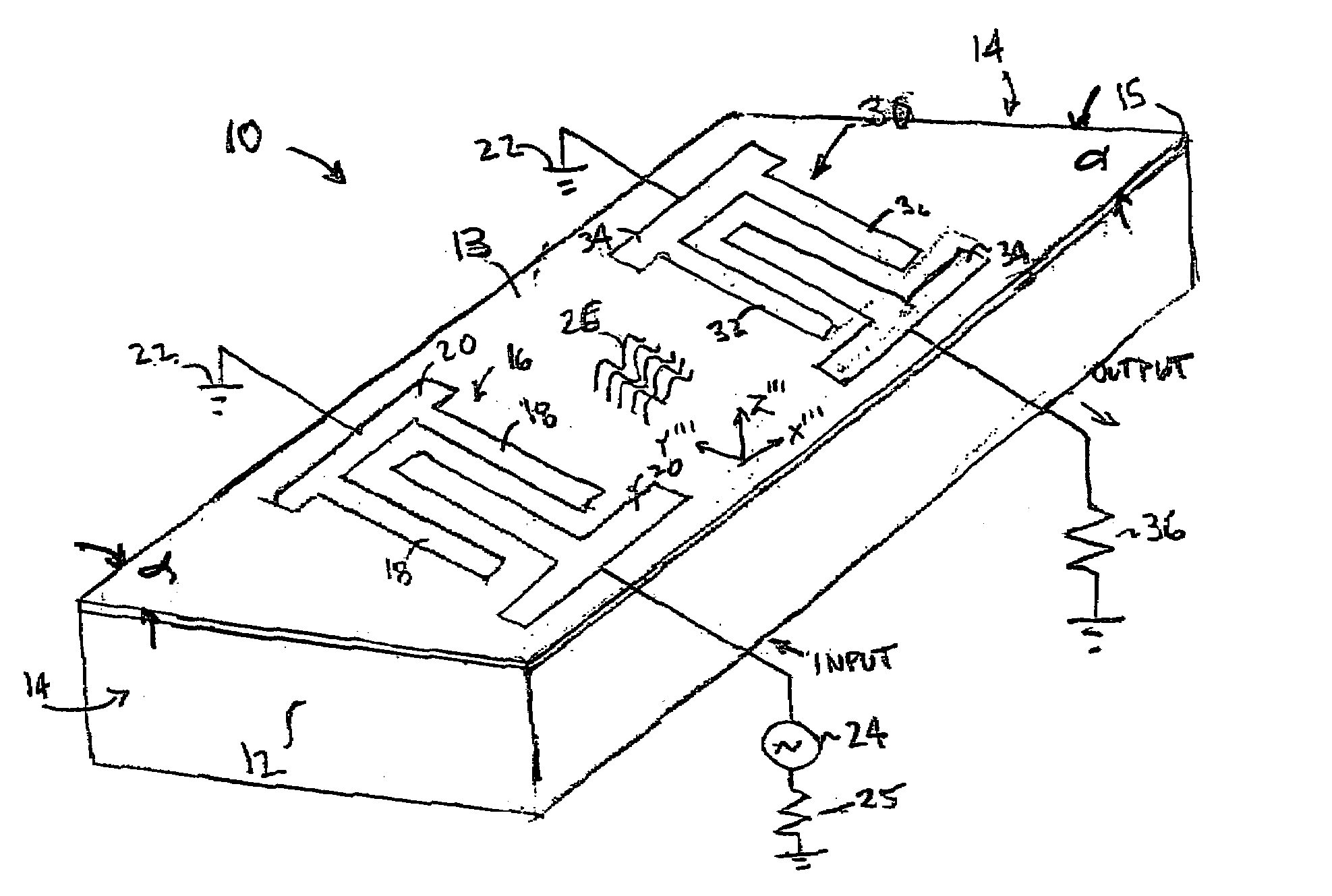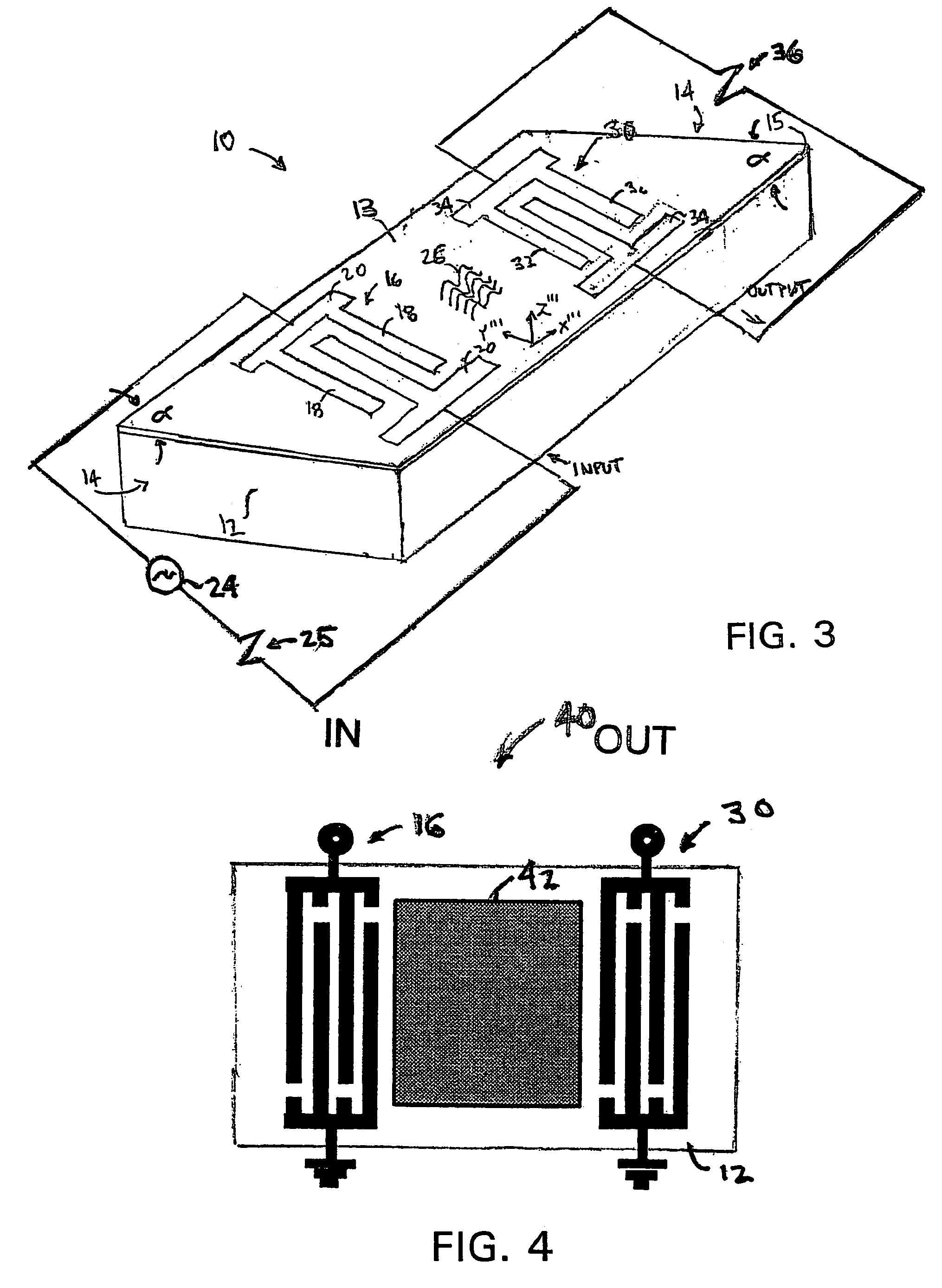Surface acoustic wave devices for high temperature applications
a surface acoustic wave and high temperature technology, applied in the direction of piezoelectric/electrostrictive/magnetostrictive devices, piezoelectric/electrostriction/magnetostriction machines, impedence networks, etc., can solve the problem of compromising the device performance, unable to measure high temperature, and the temperature range of known saw temperature sensors is limited. , to achieve the effect of high melting temperatur
- Summary
- Abstract
- Description
- Claims
- Application Information
AI Technical Summary
Benefits of technology
Problems solved by technology
Method used
Image
Examples
Embodiment Construction
[0029]Referring now to the drawings, there is illustrated in FIG. 1, a SAW device 10 for a high temperature application that is in accordance with the invention. The device 10 includes a substrate 12 formed from a crystal selected from the LGX family of crystals. The substrate 12 includes an upper surface 13 across which SAW propagate. The LGX family of crystals are materials of the trigonal crystal class 32, which is the same crystal class as quartz. The LGX family of crystals includes langatate (LGT, La3Ga5.5Ta0.5O14), langasite (LGS, La3Ga5SiO14), langanite (LGN, La3Ga5.5Nb0.5O14), and variations, such as LGTS (La3 Ga5.25Ta0.25Si0.5O14) and LGZS (La3Ga5Zr0.5Si0.5O14). In the preferred embodiment, langasite, LGS, is used for the substrate 12. Additionally, the invention also contemplates using gallium phosphate (GaPO4) for the substrate.
[0030]As described above, the material thermo expansion and the surface wave velocities are temperature dependent and are determined by the orient...
PUM
 Login to View More
Login to View More Abstract
Description
Claims
Application Information
 Login to View More
Login to View More - R&D
- Intellectual Property
- Life Sciences
- Materials
- Tech Scout
- Unparalleled Data Quality
- Higher Quality Content
- 60% Fewer Hallucinations
Browse by: Latest US Patents, China's latest patents, Technical Efficacy Thesaurus, Application Domain, Technology Topic, Popular Technical Reports.
© 2025 PatSnap. All rights reserved.Legal|Privacy policy|Modern Slavery Act Transparency Statement|Sitemap|About US| Contact US: help@patsnap.com



